‘Is everything a wine bar now?’: Melbourne’s changing dining scene, deconstructed
The Age Good Food Guide editors take the temperature of Victoria’s restaurant scene in 2023. After a lukewarm start, things are finally heating up.
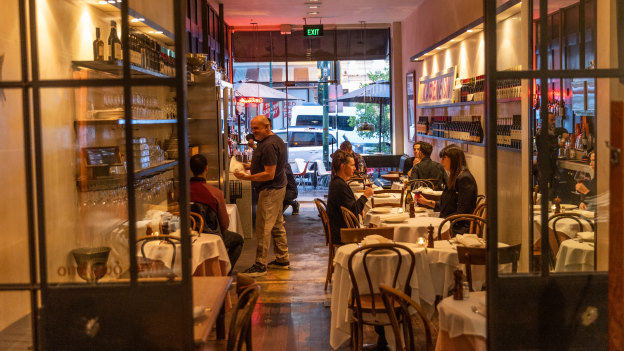
This time last year we were celebrating our industry’s pluck and innovation in the face of yet another wave of challenges: floods wiping out crops, sharp increases in the cost of goods (even basics like oil and flour), and the early signs of inflation.
Chefs flexed their creative muscles, honed during the pandemic, and wrote menus without prime cuts of beef or 13 different choices for main course. It was refreshing.
And we didn’t mind if the kitchen had run out of heritage pork that night, or the oysters were from Tassie, not South Australia as advertised. Victorians were just happy to be back out, eating dinner at 9pm if we felt like it before tumbling into a new bar.
Now things feel a little more sombre in our patch. Our northern cousins keep rolling out restaurants that dazzle, whether it’s yet another gold-trimmed brasserie, the mad-cap party atmosphere of Le Foote or Clam Bar, or a breezy offshoot of a big-name chef’s main address. The stream of Michelin-starred restaurants jetting in for ritzy pop-ups continues apace.
But here, we’re sitting tight.
Rather than investing in new venues, some operators are watching and waiting to see how far diners might be stretched by 12 interest rate rises. Others are recouping losses from two successive years of lockdowns.
“The mood is probably not what we had this time last year, in terms of this freewheeling post-COVID economy,” says Simon Blacher of Commune Group, which operates restaurants such as Moonhouse and Firebird, along with soon-to-open Studio Amaro. He thinks people are prioritising spending on overseas holidays.
Many operators see the writing on the wall and are acting fast. Lunch specials, free rounds of drinks, spectacular tableside theatrics or a simple BYO night are becoming commonplace at restaurants of all levels.
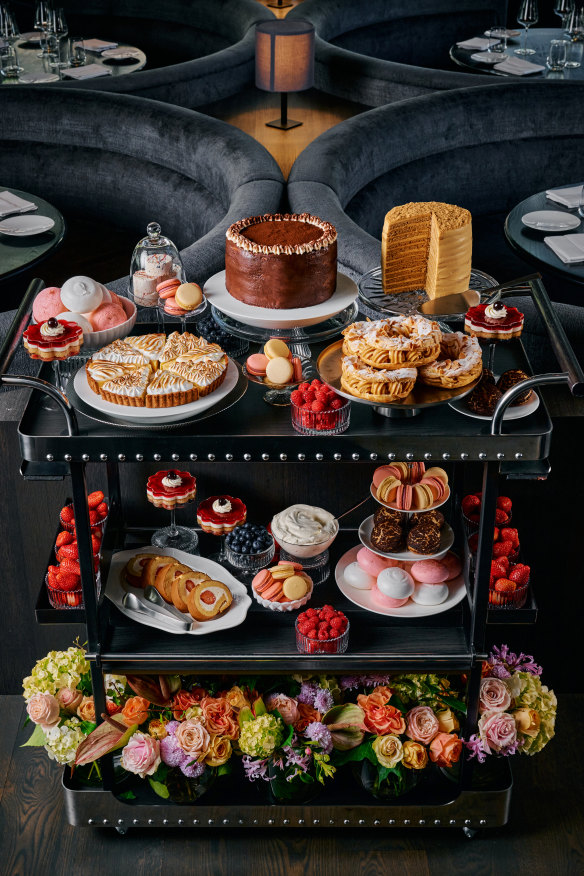
At sibling venues Neighbourhood Wine and Old Palm Liquor, value for money is a frequently used phrase at strategic meetings. The economic environment − stubbornly high prices, rapidly rising bills − is just too difficult to ignore.
“If people don’t see value [at your restaurant], they’d rather wait until they can get a booking at a place where they know it’s going to be amazing,” says chef-patron of Old Palm Liquor, Almay Jordaan.
More everyday essentials, like coffee or lunch on the run, are typically not recession victims, says Jackie Middleton of Earl Canteen and Dame. She would know − sandwich-focused Earl opened during the Global Financial Crisis. People are using their city lunch breaks or coffee to socialise, she has observed. And they’re loath to cut that if it’s only happening once or twice a week.
Victoria’s parade of new restaurants last year − partly a result of a pandemic bottleneck − has undoubtedly slowed, even in regional areas. But there’s still some creativity from experienced (or well-funded) operators willing to bet on Melbourne.
Most of the new openings follow a well-worn path paved by bistros, wine bars, neighbourhood Italian joints or sandwich delis.
Sydney hospitality group Merivale made landfall in Victoria, at long last, with Totti’s in Lorne, led by local chef Matt Germanchis. A CBD project will follow next year. Saint Dining is a grand gamble on St Kilda’s revival. Atria at the Ritz-Carlton is the pinnacle of a wave of new hotel dining – developments that were green-lit pre-pandemic but are now coming to fruition in a very different world, where local diners are more important than ever. In regional Victoria, Underbar at Hotel Vera in Ballarat epitomises the new standard of boutique getaway people are seeking. And Vue de Monde is about to invest $3 million in upgrading its three-hat Collins Street restaurant.
A new guard is also emerging, ready to blossom after two years of being cocooned with their bright ideas.
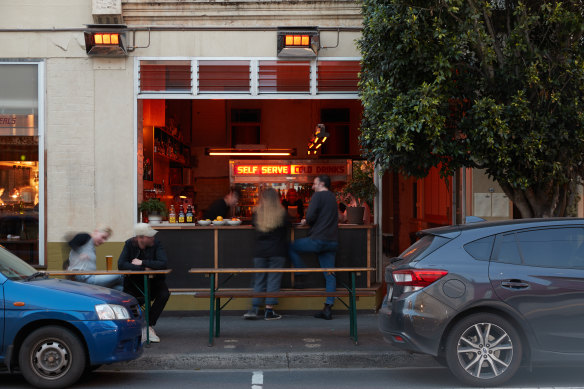
Joyful and painstakingly crafted Preston bowling alley slash bar, The Keys, is a welcome dose of old-fashioned fun. Jo Barrett’s transformation of Lorne’s bowls club into Little Picket is a casual new strand of regional dining we’d love more of. Moon Mart is one of the year’s most interesting cafes, built off the back of a skilled chef’s Korean condiment business. Young and exacting sushi chefs are opening omakase counters, such as Aoi Tsuki, with increasing frequency. There’s a continuing embrace of the best parts of Melbourne food culture from first and second-generation Australians. Kori Ice-Cream, Dale La Pau, Bahama Gold’s new menu, Capers and Ondo are great examples.
And the pop-up continues to hold appeal for operators, even seasoned ones, as they trial ideas with fewer strings attached in an uncertain world. Con Christopoulos’s Kafeneion is a notable example.
The rest of the year seems likely to hum along without any major fireworks. Value will continue to be the priority for most diners. Minimum wages will increase across the country on July 1, and menu prices will reflect those costs next month.
But Blacher says despite the economy, he doesn’t see doom and gloom.
“Melbourne is a hospitality-hungry city by default. That’s something that gives me confidence to keep doing business.”
These are the biggest forces shaping dining in Melbourne right now.
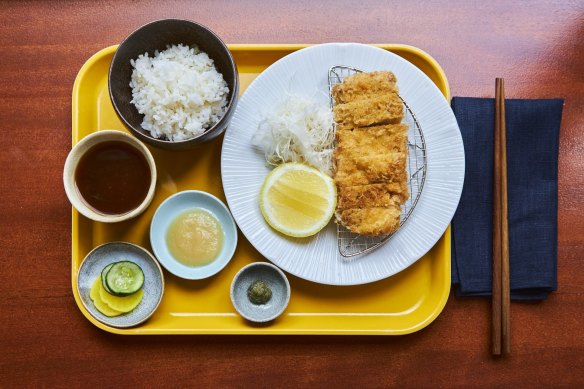
The reincarnation of the cafe
Melbourne has shaken off the idea that brunch has to be an elaborate affair. Today’s morning diner is less inclined towards lengthy, something-for-everyone menus and fancy interior design. They seek small-scale, specialist and owner-run spots like West Melbourne’s Moon Mart, where ex-Moon Park chef Eun Hee An is known for her okonomiyaki-style hash brown. Carlton’s cosy Hareruya Pantry is all about heaving, vegetable-forward bento boxes, and at Armadale’s Ondo you can start your day with bibimbap or gogi-guksu, the Korean pork noodle soup. Hand-held breakfast has pull, whether it’s a kooky pastry from Drom Bakery or a sandwich loaded with Indonesian flavours at Warkop’s CBD cafe.
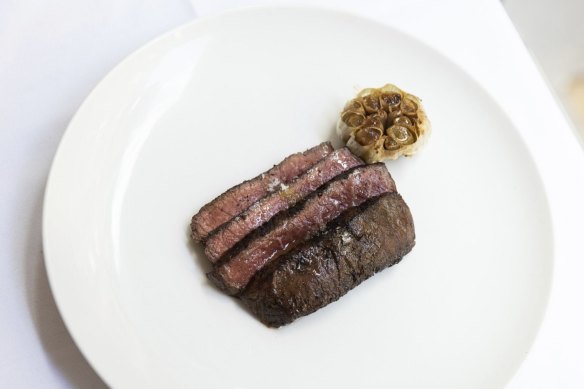
Nude main courses
Once the exclusive domain of steakhouses, the formula of ordering a main and choosing your sides has become commonplace in restaurants spanning many genres. At neighbourhood Italian restaurants, gourmet pubs and mod-Oz restaurants, your main is more than likely going to come to the party under-dressed. Sure, we’re seeing a new wave of bistros, which are fond of the practice. Granted, diners like flexibility and have more dietaries today than the guests at a wellness resort in Ubud.
But could this also be, at least partly, an easy way for restaurants to improve their ever-slimmer margins? When one upscale pub in an inner-south Melbourne suburb is charging $14 for fries, or you see mustard for $6 at an already pricey steakhouse, you do start to wonder.
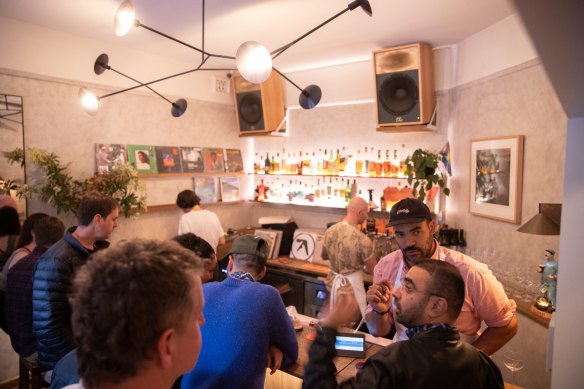
Vino meets vinyl
In a world increasingly ruled by algorithms, the listening bar is a welcome escape; a sensory space designed for audio immersion first, eating and drinking second. Here tunes are hand-picked by DJs, collectors or in-the-know staff – often from an impressive in-house record collection – and played on a first-class sound system.
Hobart-based Pitt & Giblin has become the go-to for integrated audio setups after its pioneering install at Brunswick’s Waxflower, where the audio levels remind you that you’re here more to listen than to talk. The same company is responsible for the towering speakers at new St Kilda cocktail bar Stellas, and those at Caretakers Cottage (The Age Good Food Guide’s 2023 Bar of the Year), where the only Daily Mix you’ll find will be in your glass.
Record shops such as Old Plates and Skydiver pour coffee and, later, cocktails. Soon-to-open Mornington eatery Colt will have PBS DJs working the vintage decks, and Studio Amaro’s plans include a basement bar hosting selectors. Not a Spotify subscription in sight.

Is everything a wine bar now?
Melbourne is awash with excellent wine bars; diners’ commitment-phobia means that this informal hospitality format is spreading like wildfire. Those doing it best have clever drinks lists and staff that can walk you through them, as at Richmond’s Clover, which shares parentage with bottleshop-wine bars The Moon and Toorak Cellars.
Ideally, a wine bar will have an actual bar, like the one that takes up about half the venue at playful Don’s in Prahran.
But the wine bar category is now so common, it’s spawning sub-genres. With its built-in cheese room and shelves stocked with ritzy tinned fish, Brunswick’s Grana is a bar, grocery store and fromagerie in one. Day-to-night venues, such as Sunhands and Good Measure in Carlton, or No. 100 in the CBD, take their coffee as seriously as their chardonnay.
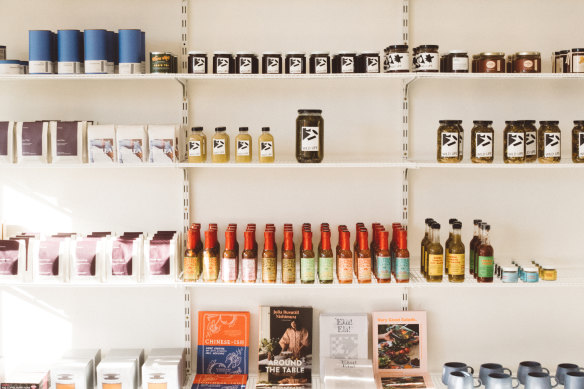
Shop-lifters
Shopping for food has had a pleasurable undercurrent to it lately. Thought you were just picking up a baguette for soup? At Wild Life Superette, you can add on tea leaves from Assembly, Six Eyed Scorpion chilli oil or a thick wedge of Holy Goat cheese. The Brunswick East bakery’s retail spin-off is named after the mini-supermarkets of France.
Heading to the Tipo 00 crew’s deli Grana, also in the neighbourhood? Set aside an hour to perch with a glass of wine and some charcuterie − you have to try before you buy!
Perhaps everyone became their own favourite chef, bartender and vibesmith during lockdown, and they’re more confident than ever entertaining at home. We now have Richmond’s Supercheese, stocking hundreds of cheeses including hard-to-get raw-milk varieties. And Ima Pantry’s lovingly assembled mix of artisan Japanese goods and locally made products in a striking brick-red and concrete space. Calia, at Emporium, is like a candy store for grown-ups who love air-freighted tuna, yuzushu or castella cake, plus the city has more gleaming new Asian grocery stores than ever, particularly along Elizabeth Street.
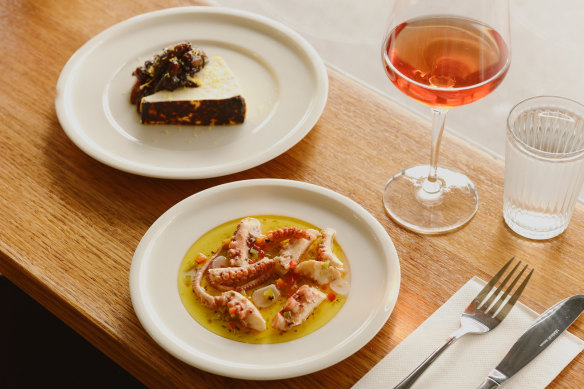
Modest ambitions
With a few exceptions, most of the new openings we’re seeing right now follow a well-worn path paved by bistros, wine bars, neighbourhood Italian joints and sandwich delis.
People are opting to open their second or third location, sticking with tried-and-tested rather than cutting-edge ideas. Big-name chefs are creating more casual offshoots of their restaurants, instead of launching another equally high-end venue.
Something Melbourne nailed in the late 1990s, the all-day cafe with wine, is also returning, partly a result of the wine bar’s new ubiquity. People need coffee and a quick lunch, and wine makes money − it’s an attractive formula for today’s operators.
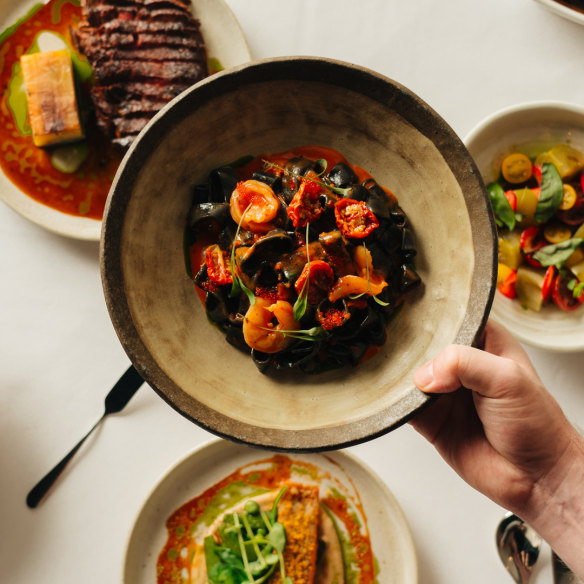
Value for money
You know things are looking a bit less rosy on the old P&L statement when upper-crust restaurants are beginning to offer discounts. Value for money now matters to all budgets, whether your idea of a bargain is a $24 parma and pot, or a $77 two-course Friday lunch at Society. Big player Commune Group is offering 25 per cent cashback on your bill throughout June if you dine mid-week at Firebird, Moonhouse or one of their other venues. The prix-fixe lunch menu is back in a big way, whether it’s at northside Italian Al Dente Sapori or swish southside mod-bistro Omnia. And oyster-fuelled happy hours are a common sight at pubs, moody French restaurants and slick hangouts for corporates.